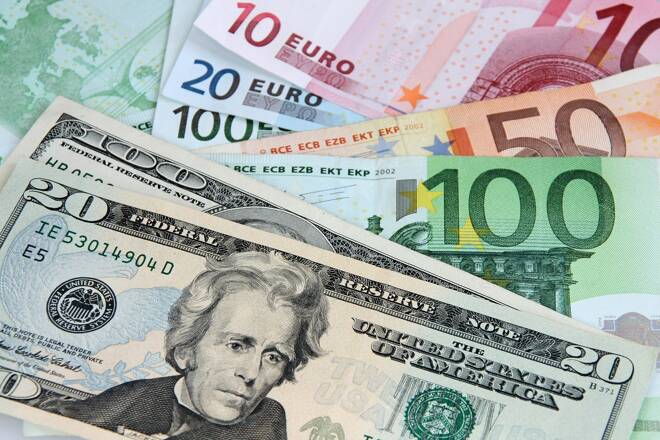Advertisement
Advertisement
EUR/USD Forecast: Eurozone Inflation Vs. US Spending Showdown
By:
In a climate of fluctuating EUR to USD rates, the analysis of Eurozone inflation and US personal spending reveal pivotal insights for imminent economic forecasts.
Highlights
- EUR/USD rose 0.60% on Thursday, ending the day at $1.05654, reversing Wednesday’s 0.66% decline.
- German recession fears grow; unemployment and retail sales are in focus.
- EUR/USD sways; Eurozone inflation. The US spending patterns are critical.
Thursday Overview
On Thursday, the EUR/USD gained 0.60%. Reversing a 0.66% decline from Wednesday, the EUR/USD ended the day at $1.05654. A mixed session saw the EUR/USD fall to a low of $1.04909 before reaching a high of $1.05788.
Eurozone Inflation and ECB President Christine Lagarde Are in Focus
German retail sales and unemployment figures for August will kickstart the European session. A slide in retail sales and an unexpected rise in the German unemployment rate would paint a grim picture of the German economy.
Deteriorating labor market conditions impact consumer confidence and the propensity to spend. German private consumption accounts for 51% of the German GDP. A negative outlook on consumption would support the bets on a prolonged German recession.
Later in the morning, Eurozone inflation numbers for September and ECB President Christine Lagarde will likely impact buyer appetite for the EUR. Hotter-than-forecasted core inflation numbers would support a higher-for-longer ECB interest rate path.
Economists forecast the Eurozone core annual inflation rate to soften from 5.3% to 4.8% in September.
ECB President Lagarde may reiterate the need for a higher-for-longer approach and further influence the EUR/USD trajectory.
Other stats include inflation and consumer confidence numbers from France. However, these will likely play second fiddle to the stats from Germany and for the Eurozone.
US Personal Income, Inflation, and Personal Spending in Focus
While the numbers from the Euro area will attract interest, the US economic calendar may impact the EUR/USD more.
Higher-than-expected US personal spending and sticky inflation would support the hawkish Fed interest rate trajectory. However, US personal income must signal a positive outlook on consumption to fuel Fed bets on a December rate hike.
An upward trend in consumption would fuel demand-driven inflationary pressures. Higher interest rates would counter wage growth and impact consumer spending.
Economists forecast personal spending to increase by 0.4% and personal income to rise by 0.4%. However, economists predict the Core PCE Price Index to increase by 3.9% year-over-year in August versus 4.2% in July.
For investors concerned about a hard landing, an unexpected slump in personal spending would reignite fears of a hard landing. US private consumption contributes over 65% to the economy.
Short-Term Forecast:
Monetary policy and economic divergence remain tilted in favor of the US dollar. However, Eurozone inflation and US Core PCE Price Index figures may sway the balance today. Hotter-than-expected US inflation numbers would leave EUR/USD parity in play.
EUR/USD Price Action
Daily Chart
The EUR/USD sat below the 50-day and 200-day EMAs, affirming bearish price signals.
A EUR/USD return to $1.06 would support a move toward the $1.06342 resistance level. However, Eurozone inflation must be hotter and US inflation softer to support a breakout.
Failure to retake the $1.06 handle will leave the EUR/USD at risk of a break below the $1.05230 support level.
The 14-period Daily RSI at 36.42 supports a EUR/USD fall below the $1.05230 support level before reentering oversold territory.
4-Hour Chart
The EUR/USD hovers below the 50-day and 200-day EMAs, reaffirming the bearish price signals. A break above the 50-day EMA would support a EUR/USD move to the $1.06342 resistance level.
However, failure to break through the 50-day EMA would leave the $1.05230 support level in play.
The 14-period 4-Hourly RSI at 52.73 supports a EUR/USD breakout from the 50-day EMA and $1.06342 resistance level before entering overbought territory.
About the Author
Bob Masonauthor
With over 28 years of experience in the financial industry, Bob has worked with various global rating agencies and multinational banks. Currently he is covering currencies, commodities, alternative asset classes and global equities, focusing mostly on European and Asian markets.
Advertisement
